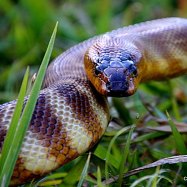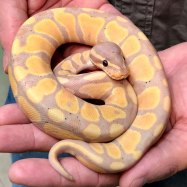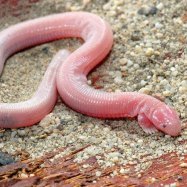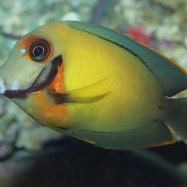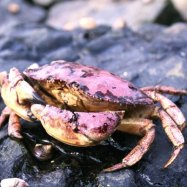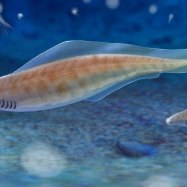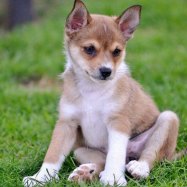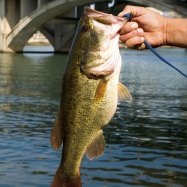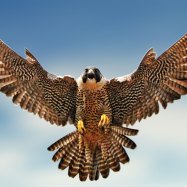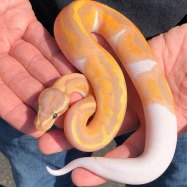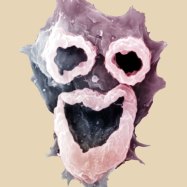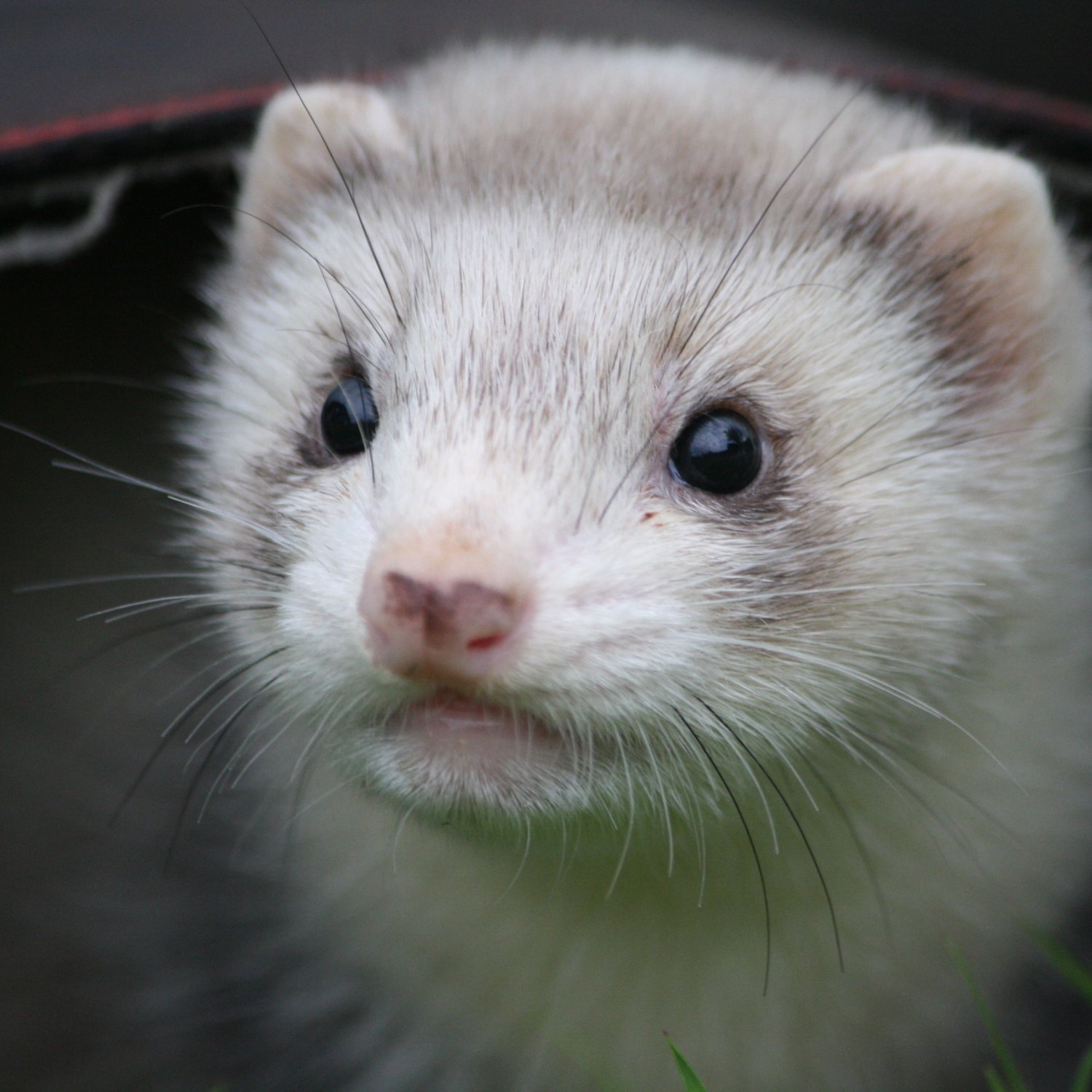
Ferret
About 20 inches (51 cm)
Looking for a furry and fun pet? Consider a ferret! These playful animals have a slender, elongated body, short legs, and can grow up to about 20 inches in length. They are part of the Mustelidae family and can be found worldwide in their domesticated form. With their mischievous personalities, ferrets make great companions for both kids and adults. Adopt one today and watch your home come alive with their playful antics! #FurryFriends #FerretLove #PetCompanions
Animal Details Summary:
Common Name: Ferret
Kingdom: Animalia
Habitat: Grasslands, forests, and wetlands
The Playful and Fascinating Ferret: A Mischievous Companion in the Animal Kingdom
The animal kingdom is full of diverse and captivating creatures, each with its unique features and behaviors. From sleek cheetahs to majestic elephants, every animal plays a vital role in maintaining the balance of the ecosystem. However, there is one creature that often gets overlooked – the ferret.Scientifically known as Mustela putorius furo, the ferret belongs to the kingdom Animalia, the phylum Chordata, and the class Mammalia Ferret. It is a part of the order Carnivora and the family Mustelidae. Ferrets are often recognized as playful and curious animals, making them a popular choice for pet companions. These furry creatures are native to Europe, but their domesticated form can be found worldwide in various colors and sizes.
A Versatile Habitat and Feeding Method
Ferrets have a versatile habitat and can adapt to various environments, including grasslands, forests, and wetlands. They have also been successfully domesticated and can thrive as household pets. In the wild, ferrets prefer living in underground burrows or abandoned dens of other animals.As their scientific name suggests, ferrets are part of the carnivorous category, meaning they primarily feed on meat. In the wild, they hunt small mammals like rabbits, squirrels, and rodents. As pets, ferrets are usually fed a diet of high-quality dry food specifically designed for their nutritional needs Fire Bellied Toad. Occasional treats of cooked meat and vegetables are also acceptable.
The Unique Domestication of Ferrets
The domesticated form of ferrets is a result of continuous breeding and domestication efforts by humans. While their exact country of origin is unknown, ferrets have been reported to be domesticated and used for hunting purposes as early as 63 BC.It wasn't until the 19th century that ferrets started gaining popularity as household pets. During this time, they were also used for pest control, particularly in controlling rabbit populations in Australia and New Zealand. However, due to their playful nature and affectionate personalities, ferrets soon became more popular as pets rather than working animals.
The Colorful and Slim Physique of Ferrets
One of the most remarkable features of ferrets is their unique coloration. While their fur is mostly white, black, or brown, some ferrets can also have a striking sable color. Their fur is usually soft and thick, with a glossy shine, making them even more charming to look at.Apart from their coloration, ferrets also have a slender and elongated body with short legs. This body shape allows them to move through narrow spaces and burrow underground. On average, ferrets measure about 20 inches (51 cm) in length and weigh between 1.5 to 4 pounds (0.7 to 1.8 kg). They have a sharp sense of smell and hearing, making them efficient hunters and playful explorers.
The Misunderstood Reputation of Ferrets
Ferrets may be popular among pet owners, but they are often misunderstood by those who are not familiar with them. Due to their natural hunting and burrowing instincts, ferrets may exhibit behavior that can be perceived as mischievous or destructive. However, with proper training and socialization, ferrets can make wonderful and well-behaved pets.Furthermore, there have been concerns about the safety and legality of owning ferrets as pets. In some countries and states, ferrets may be considered illegal or require a permit to own due to their potential to escape and become invasive species. It is essential for potential ferret owners to research and follow their local laws and regulations before bringing one home as a pet.
The Playful and Affectionate Persona of Ferrets
Despite their misunderstood reputation, ferrets have an undeniable charm that has captured the hearts of many pet owners. They are incredibly social animals and thrive on human interaction. With proper care and attention, ferrets can form strong bonds with their human companions and become affectionate and playful pets.Ferrets have a natural curiosity and love to explore their surroundings. They are also intelligent animals and can be trained to do simple tricks. However, their playful nature and mischievous behavior may require supervision, especially when they are young.
The Responsibilities of Ferret Ownership
As with any pet, owning a ferret comes with responsibilities and requires a commitment to providing proper care and attention. Ferrets need a spacious but secure living environment with plenty of toys and enrichment activities to prevent boredom and promote physical and mental stimulation.They also have specific dietary needs, and owners must ensure they are fed a balanced diet of high-quality food to maintain their health. Regular grooming and veterinary care are also crucial for keeping ferrets healthy and happy. It is essential to provide them with a clean living space and regular vet check-ups to prevent potential health issues.
In Conclusion
In the vast and diverse animal kingdom, the playful and fascinating ferret may often be overlooked. However, with its unique features and charming personality, it deserves more recognition as an incredible companion to humans. From their domestication journey to their adaptable habitat and affectionate persona, ferrets are truly remarkable creatures that make for fun and loving pets.So the next time you come across a ferret, don't be quick to dismiss it. Take a moment to appreciate its beauty and learn more about these playful and curious animals. Who knows, they may just surprise you with their affection and bring joy and entertainment into your life.

Ferret
Animal Details Ferret - Scientific Name: Mustela putorius furo
- Category: Animals F
- Scientific Name: Mustela putorius furo
- Common Name: Ferret
- Kingdom: Animalia
- Phylum: Chordata
- Class: Mammalia
- Order: Carnivora
- Family: Mustelidae
- Habitat: Grasslands, forests, and wetlands
- Feeding Method: Carnivorous
- Geographical Distribution: Native to Europe, but widely domesticated
- Country of Origin: Unknown (domesticated form)
- Location: Worldwide (domesticated form)
- Animal Coloration: Various colors including white, black, brown, and sable
- Body Shape: Slender and elongated body with short legs
- Length: About 20 inches (51 cm)
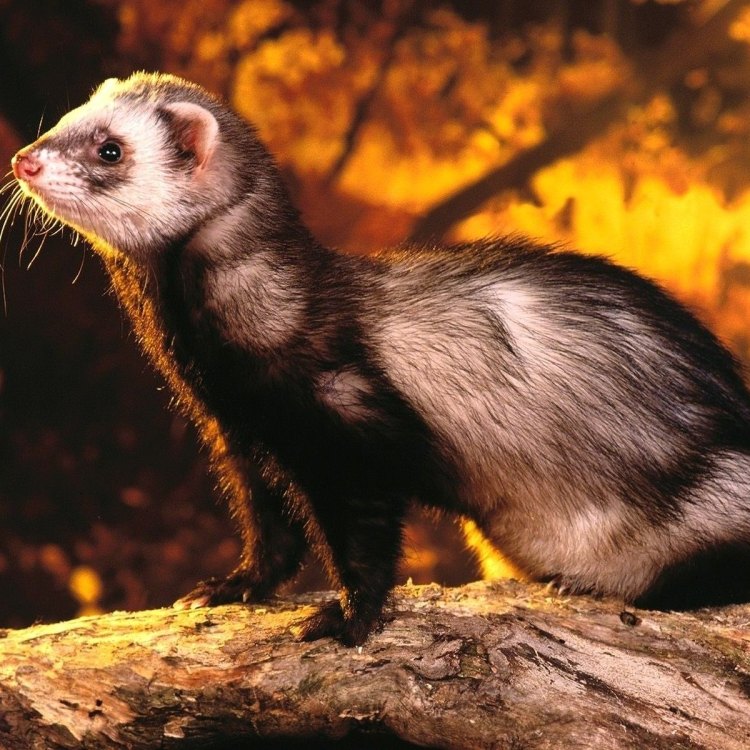
Ferret
- Adult Size: Small to medium-sized
- Average Lifespan: 7-10 years
- Reproduction: Sexual
- Reproductive Behavior: Seasonal breeders
- Sound or Call: Chirping and hissing sounds
- Migration Pattern: Non-migratory
- Social Groups: Generally solitary
- Behavior: Highly curious and playful
- Threats: Loss of habitat, predation by larger animals
- Conservation Status: Domesticated form: Not applicable; Wild form: Least Concern
- Impact on Ecosystem: May prey on small animals, but generally do not have significant impact
- Human Use: Domestic pets, hunting companions, laboratory animals
- Distinctive Features: Long, slender body; sharp claws; musky odor
- Interesting Facts: Ferrets are domesticated from the European polecat. They have been used for hunting rabbits for centuries. They have a strong sense of smell and make excellent companions.
- Predator: Large birds of prey, coyotes, foxes
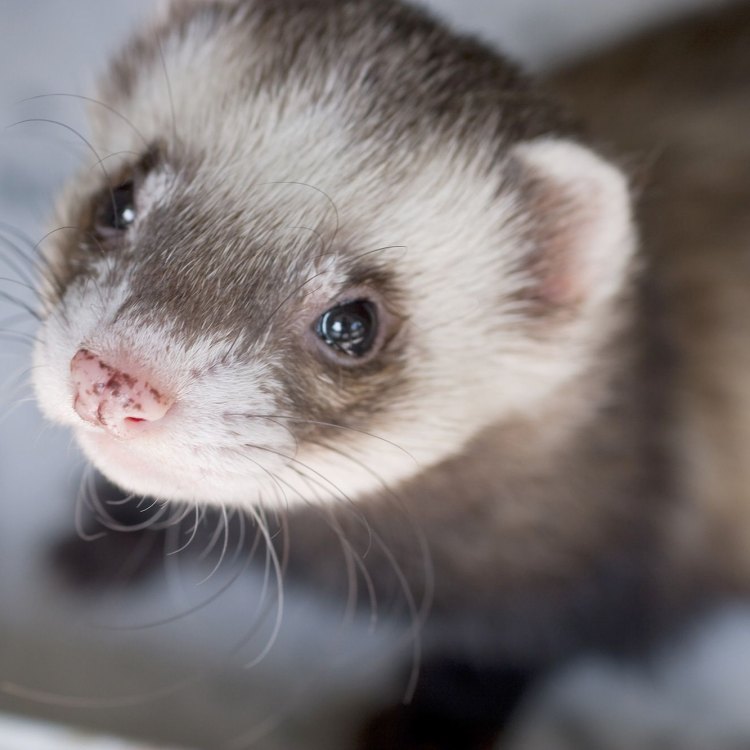
Mustela putorius furo
The Fascinating World of Ferrets: More Than Just Cute Pets
If you're a fan of furry, playful, and highly curious pets, chances are you've come across the charming and mischievous ferret. These adorable creatures have captured the hearts of many and have gained popularity as domestic pets. But there's more to these small mammals than meets the eye. From their unique reproductive behaviors to their impact on ecosystems, ferrets have a fascinating world waiting to be discovered PeaceOfAnimals.Com.In this article, we'll delve into the world of ferrets, exploring their physical characteristics, behaviors, threats, conservation status, and even their impact on the ecosystem.
Size and Lifespan
Ferrets, scientifically known as Mustela putorius furo, are small to medium-sized mammals, typically measuring 20 inches in length, including the tail, and weighing between 1 to 5 pounds. They have a long, slender body with sharp claws that make them excellent climbers. Their domesticated form is generally larger and more muscular than their wild counterparts.These adorable pets have an average lifespan of 7-10 years, which can vary based on their diet, living conditions, and overall care.
Reproductive Behavior
Ferrets are sexual reproducers with a unique breeding cycle. In the wild, ferrets are known as seasonal breeders, with their reproductive cycle being tied to the daylight hours. As the days get longer in the spring and summer, ferrets become receptive to mating. In contrast, as the days become shorter in the fall and winter, they become infertile Flour Beetle.However, domesticated ferrets do not follow this seasonal breeding pattern, with their reproductive cycle being affected more by their diet and living conditions.
One interesting fact about ferret reproduction is that the female ferret, also known as a jill, must be induced into heat via a male ferret, also known as a hob. This is due to a hormone imbalance in female ferrets, which can lead to life-threatening health issues if not bred.
Sounds and Calls
Ferrets may be known for their playful and sometimes rowdy behavior, but they have a softer side when it comes to vocalizations. They communicate through a variety of sounds, including chirping, hissing, and even a purring noise when content.One distinctive sound that ferrets make is the "dook" sound, which is a combination of a chirping noise and a hiss. This vocalization is typically associated with excitement and playfulness.
Social Behavior
While ferrets are often seen as cute and cuddly pets, their social behavior may surprise you. In the wild, they are generally solitary creatures, only coming together to mate.However, domesticated ferrets are highly social animals and require companionship to thrive. This is why it's recommended to have more than one ferret if keeping them as pets. A single ferret can become lonely and depressed, leading to health and behavioral issues.
Curiosity and Playfulness
One of the most endearing qualities of ferrets is their high curiosity and playfulness. They are intelligent creatures that love to explore their surroundings and investigate anything that catches their attention.Their playful nature also makes them great companions, always finding ways to entertain themselves and their owners. They can be trained to do various tricks and even play games with their human friends.
Threats to Ferrets
Like many other animals, ferrets also face several threats, both in the wild and as domestic pets. The most significant threat to wild ferrets is the loss of habitat and competition for resources with other animals such as foxes and coyotes. They are also preyed upon by large birds of prey, such as owls and hawks.As domestic pets, ferrets may still face threats from larger animals, but their biggest threat is their owners. Ferrets require a specific diet, proper living conditions, and regular veterinary care to thrive. Failure to provide these can lead to serious health issues and a shortened lifespan.
Conservation Status
The conservation status of ferrets depends on their form. In the domesticated form, they are not applicable as they are bred and raised in captivity. However, the wild form of ferrets is classified as "Least Concern" by the International Union for Conservation of Nature (IUCN) Red List.Despite their classification, wild ferrets still face threats from habitat loss and fragmentation, as well as hunting and trapping for their fur.
The Impact of Ferrets on Ecosystems
As mentioned earlier, domesticated ferrets do not have a significant impact on ecosystems as their breeding and living conditions are closely monitored by their owners. However, in the wild, ferrets may contribute to the decline of small animal populations as they have been known to prey on rabbits, rodents, and even birds.But, unlike other predators, ferrets do not have a significant impact on the ecosystem as they primarily prey on the weak and sick animals, ensuring a healthy balance in the ecosystem.
Human Use of Ferrets
Ferrets have played a significant role in human history, being used for various purposes. They were initially domesticated from the European polecat to use for hunting rabbits in the 14th century. Their sharp claws, natural agility, and strong sense of smell made them excellent companions for hunters.Today, ferrets are still used as hunting companions, but they have also gained popularity as domestic pets and even laboratory animals for research purposes.
Distinctive Features
Ferrets have several distinctive physical features that make them stand out. Their long, slender body allows them to navigate through tight spaces with ease, making them excellent escape artists. Their sharp claws also aid in climbing and digging.One of the most unique features of ferrets is their musky odor. This distinct smell is due to their anal glands, which they use for marking their territory and communicating with other ferrets. It's a smell that may take some getting used to for new ferret owners, but it's a part of what makes them special.
Interesting Facts
To wrap up our exploration of ferrets, here are some fun and interesting facts about them:- Ferrets are relatives of weasels, otters, and badgers.
- They are native to Europe, where they were domesticated from the European polecat.
- Ferrets have a strong sense of smell, allowing them to detect prey and navigate their environment.
- A group of ferrets is called a "business," which couldn't be more fitting as they are always up to some kind of mischief.
- They require a high-protein diet, including specialized ferret food and occasional treats like eggs and cooked meat.
- Ferrets have a playful and sometimes mischievous nature, earning them the nickname "the clowns of the animal world."
In Conclusion
Ferrets may be small in size, but they have a world of fascinating qualities waiting to be discovered by those who appreciate them. From their unique reproductive behaviors to their playful and curious nature, ferrets have firmly established themselves as beloved domestic pets and hunting companions.However, it's important to remember that these cute and cuddly creatures require proper care and monitoring to thrive, whether in the wild or as domestic pets. By understanding their behaviors, needs, and impact on the ecosystem, we can ensure the well-being of these adorable creatures for years to come.
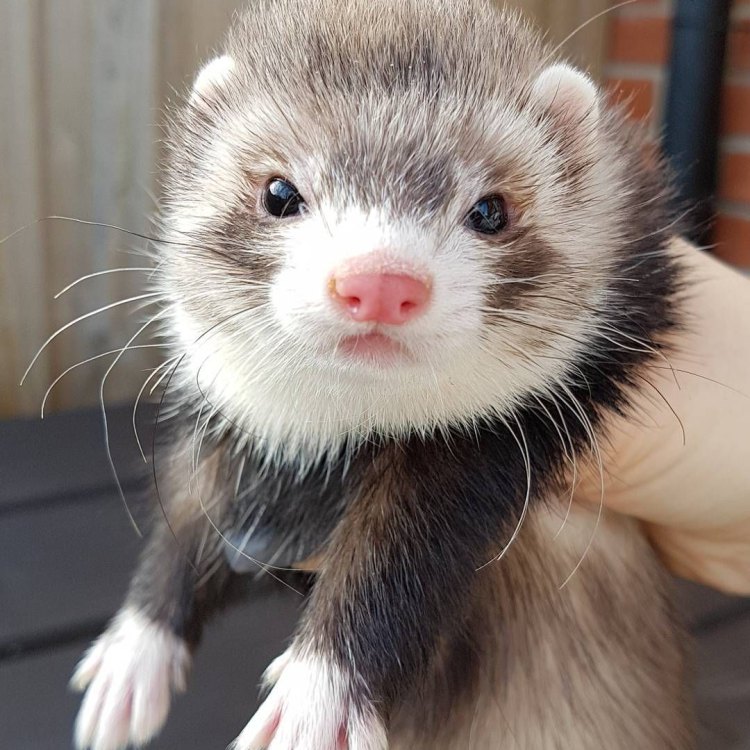
The Playful and Fascinating Ferret: A Mischievous Companion in the Animal Kingdom
Disclaimer: The content provided is for informational purposes only. We cannot guarantee the accuracy of the information on this page 100%. All information provided here may change without prior notice.

